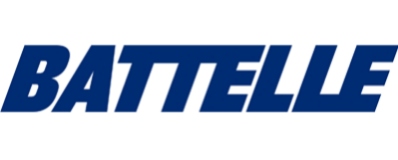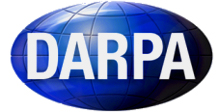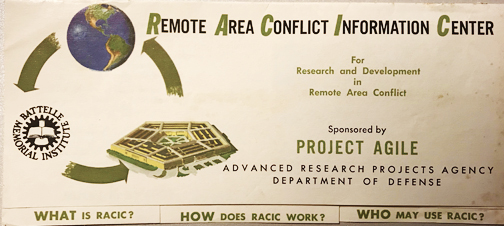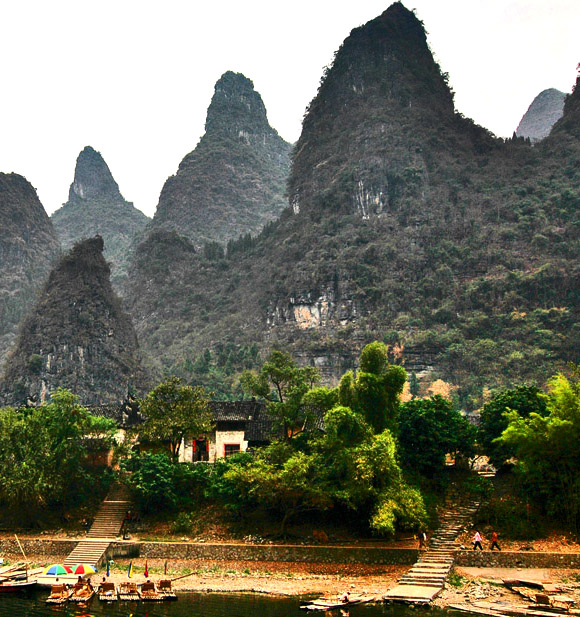Remote Area Conflict Information Center
by Irene Baron www.irenebaron.com
"MINDREACHER - the first manuscript has new and complex ideas which startle people. They are woven into the story as easily as threads sewn into fabric. This article tells how they originated.
First and Beta readers have asked me how I came up with so many astounding ideas in my MINDREACHER adventure/thriller manuscripts. They say I incorporate unusual ideas into the novels as though common in the story.
Where did I obtain my information?

I learned much about the military when working with Battelle Memorial Institute, an ARPA contractor in Southeast Asia. There are many sections of the Pentagon and Department of Defense involved in monitoring and coordinating cutting edge research. I use new discoveries or items in current research by our government and, with permission, from private businesses. After studying all science fields as an under graduate and in graduate school and teaching various sciences, I was hired by Battelle Memorial Institute Columbus as an Information Specialist. To have a broad knowledge across the sciences was a plus. Many scientists applied their studies to one field, such as astronomy, and became an expert in that field. Having studied all sciences, I was unusual in having the ability to gather data from many areas of study in the creation of analogies and conclusions.
 My Information Specialist category was with Remote Area Conflict Information Center (RACIC) for Research and Development in Remote Area Conflict. RACIC was sponsored by Project Agile of the Advanced Research Projects Agency (ARPA), Department of Defense (DOD). The RACIC home office was in the Battelle Columbus laboratories. Such a Department of Defense information analysis center was recognized as a scientific and engineering research facility. Scientists and engineers analyze the gathered scientific and technical data information during research to gain information and ensure they are not wasting time in duplication. RACIC answered technical inquiries, conducted special studies, prepared state-of-the-art reports, and provided research and development to support the DOD community. RACIC acquired, organized, stored and analyzed information concerning remote areas of conflict.
My Information Specialist category was with Remote Area Conflict Information Center (RACIC) for Research and Development in Remote Area Conflict. RACIC was sponsored by Project Agile of the Advanced Research Projects Agency (ARPA), Department of Defense (DOD). The RACIC home office was in the Battelle Columbus laboratories. Such a Department of Defense information analysis center was recognized as a scientific and engineering research facility. Scientists and engineers analyze the gathered scientific and technical data information during research to gain information and ensure they are not wasting time in duplication. RACIC answered technical inquiries, conducted special studies, prepared state-of-the-art reports, and provided research and development to support the DOD community. RACIC acquired, organized, stored and analyzed information concerning remote areas of conflict.
 RACIC included collected information about remote conflict/war incidents, border security, communications, environment, food technology, mobility (air, ground & water), power sources, river warfare, surveillance, target acquisition, weapons, munitions and more.
RACIC included collected information about remote conflict/war incidents, border security, communications, environment, food technology, mobility (air, ground & water), power sources, river warfare, surveillance, target acquisition, weapons, munitions and more.
How did RACIC obtain their information?
International organizations with informational libraries on one or more of those topics were approached by the Battelle RACIC team. The organization was requested to allow Battelle to copy every document in their research library. (If you worked in the private sector, you may have witnessed libraries so extensive that floors had to be reinforced due to the collection weight.) Once the documents were copied, they were placed for use by others in the program. For a monthly fee, every organization allowing their documents to be included would have access to the RACIC library. Duplicate information files were/are maintained in the RACIC-Washington office in Arlington, VA. The files are open to all members of ARPA/AGILE and ARPA-approved visitors.
Why Thailand?
The United States government had interests in Thailand due to the Southeast Asia Treaty Organization (SEATO), an international organization created in 1954 by the Manila Pact. Founders, Dwight D. Eisenhower and John Foster Dulles, helped mold the SEATO Treaty. With SEATO in place, the United States was obligated to help defend all countries signing the document. The Bangkok ARPA research had emphasis on strengthening counter-insurgency capabilities of the Royal Thai Government. (https://www.gao.gov/assets/210/201228.pdf
Who would threaten Thailand?
The four years I lived there, invasion threats to Thailand were broadcast almost daily by China radio. I listened to their English broadcast which announced Vietnam War news before it was broadcast on American stations.
The Ambassador to Thailand had a Special Assistant for Counterinsurgency who coordinated and supervised the counterinsurgency activities of the U.S. Mission. Both military and nonmilitary assistance was directed to the communist threat.
To put that in simple terms, the work I accomplished was with the highly classified Mekong River Project. Information was gleaned and compiled for troops during possible future conflicts along the Mekong River bordering Thailand, Laos and Cambodia. When reading our document, military command would know safe crossing sites of the Mekong, where to find boats and overland transportation, location of potable/safe drinking water, village maps with political/social information, trails, roads, etc.
At that time, few places upcountry along the Mekong River had electricity. To compensate, the village leader would be given a portable radio with batteries. That radio was placed on a high pole on Saturdays for the local citizens to hear government news broadcasts. Village leaders occasionally received information from traveling authorities.
What did I do for RACIC?
My work involved all aspects of aerial photography along the Mekong River bordering Thailand, Laos and Cambodia. This was accomplished from Air America helicopters and airplanes equipped with the photo op reinforced 1-2’ square openings in the floor of the fuselage. As far our team knew, there had been no cartography work in Thailand prior to the Vietnam War. The geology and hydrology data I compiled and wrote for the Project used the aerial images.
Did I have any problems?
 Other than the helicopter being grounded during sudden storms in a unusual terrain, being shot at from the ground, and frightening people who had never seen blonde hair and blue eyes, I had an editing problem. The editor of the my written Geology section of the Mekong River Handbook had no geology background. When I included pertinent data about the karst topography which troops would encounter, the editor insisted they be called “small hills.” I contacted Battelle Columbus to no avail. I still cringe thinking of future troops using our manual during deployment and arriving in a karst area. They would be totally unprepared for the difficult terrain. I imagine their language would be very colorful! As our book was classified Top Secret, I could not keep any of my photographs. However, to the left I included an image of karst from a USGS website. Does that look like small hills to you?
Other than the helicopter being grounded during sudden storms in a unusual terrain, being shot at from the ground, and frightening people who had never seen blonde hair and blue eyes, I had an editing problem. The editor of the my written Geology section of the Mekong River Handbook had no geology background. When I included pertinent data about the karst topography which troops would encounter, the editor insisted they be called “small hills.” I contacted Battelle Columbus to no avail. I still cringe thinking of future troops using our manual during deployment and arriving in a karst area. They would be totally unprepared for the difficult terrain. I imagine their language would be very colorful! As our book was classified Top Secret, I could not keep any of my photographs. However, to the left I included an image of karst from a USGS website. Does that look like small hills to you?
What about all the French maps?
If the French created maps when they fought in Vietnam, they didn’t leave them behind. The only maps to which we had access prior to the RACIC work were those made by petroleum companies advertising fuel stops. It was frustrating to learn ground maps had been available from another ARPA project after completion of the Mekong River Project. Too much secrecy!
How did I learn to accomplish technical writing?
Battelle provided 2-weeks of intensive/extensive training in London, England. Battelle Memorial Institute and the international Engineers Joint Council sponsored the course of "Indicative Abstracting and Coordinate Indexing." It included:
Abstracting Techniques; Types of Abstracts
Component Operations and Procedural Steps in Coordinate Indexing
Index and Collection Organization and Storage
Information Retrieval Thesauri
Information Problem: Causes, Effects, & Solutions Information Retrieval Thesauri
Information System Objectives & Approaches
Introduction to Mechanization of Information Storage & Retrieval
Levels of Sophistication of Mechanization of Information Handling
Linguistic Problems in Information Retrieval
New Approaches to Information Retrieval/
Relationships of Knowledge, Information , & Data
Syntactical Problems in Coordinate Indexing & Solutions: Links and Roles
The Engineers Joint Council action Plan
Traditional Approaches to Information Handling
This coursework would later lead to internet word retrieval systems. ARPA had a direct role in such internet creations and usage. I was trained to read material and put the data provided into 4-5 descriptor words. Those few words would be used for accurate document retrieval.
When I arrived in Bangkok, the office building was still under construction. With my intense science background, I was moved to the classified Mekong River Project. That project had also been contracted to Battelle and was under the direction of the Office of the Secretary of Defense, Advanced Research Projects Agency, Research & Development Center, Thailand (OSD/APRA.R&D Center/Thailand).
After the Mekong River Project, I researched and wrote the two-volumeOperational Procedures Manual: Laboratory Material Division (all levels) for Battelle Memorial Institute (Remote Area Conflict Information Center), Office Secretary of Defense/Advanced Research Projects Agency/Research &Development Center, Supreme Command Headquarters, Bangkok, Thailand.
By the way, my maiden name in Thai is: 
What about the MINDREACHER book to be published this fall?
Book 1 of my fiction MINDREACHER series has remote area conflict primarily in Laos. During combat, the elite U.S. Marine Corps character (Major Jon Coulter) has to choose between following accepted military tactics or instructions from a government hired telepath. The futuristic gadgets used in the story as commonplace will remind you of a James Bond novel. Imagine James Bond being stuck with a telepath!
I hope you look forward to some fun reading when Book 1 of the MINDREACHER series is published. Yes, there is some humor in it. Expect to be surprised.